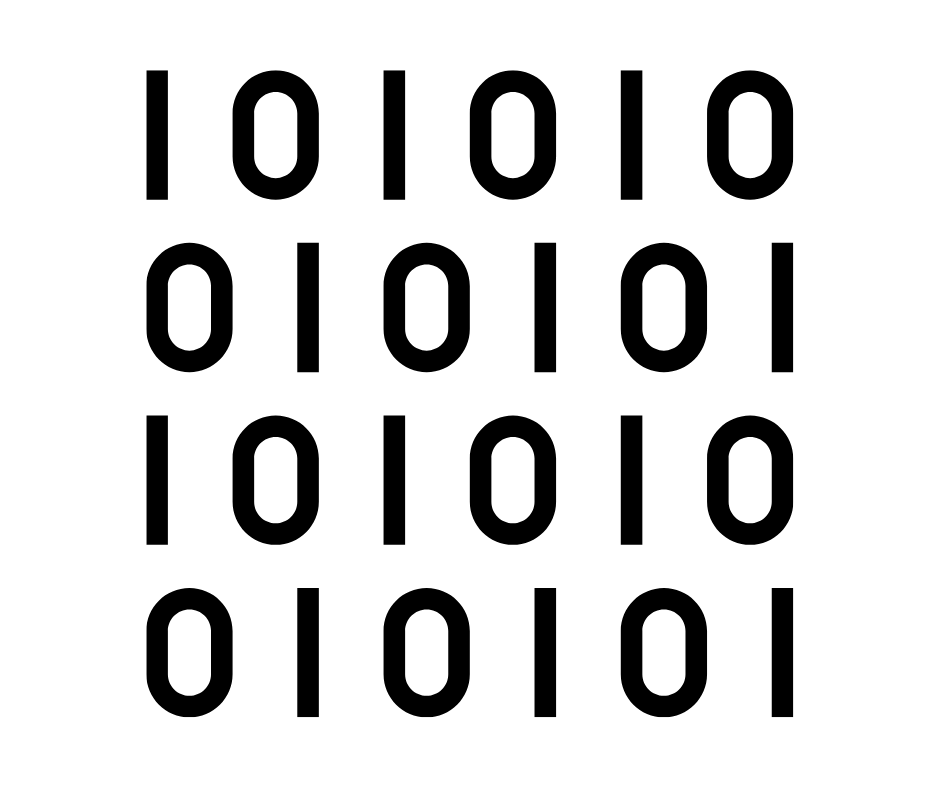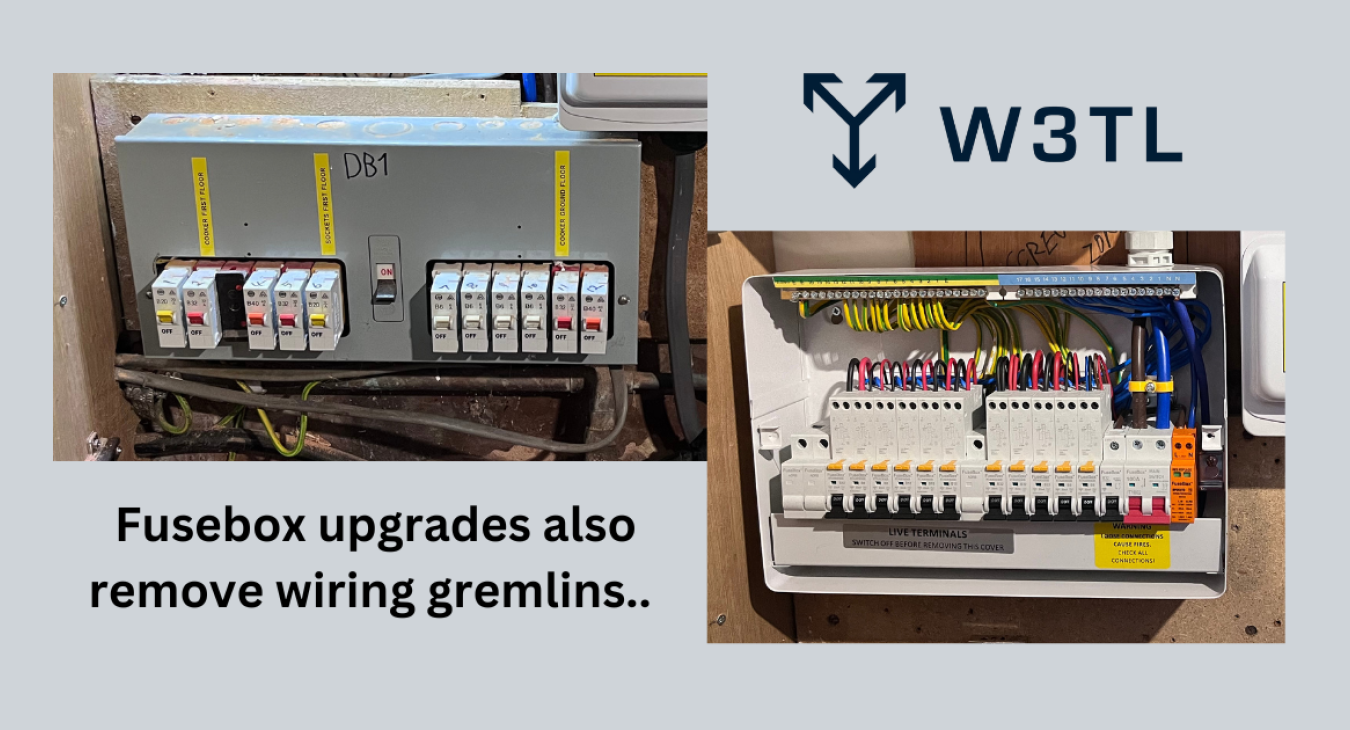
Who's the champ of the power circuit?
When it comes to wiring up new circuits for your home, each electrician will jump into the arena armed with their knowledge determined to fight to the death in the battle to make the ring final or the radial circuit reign supreme.
Yeah ok.. You're thinking what's a ring and radial?
For context, were talking about circuits that power socket outlets.
When you have a new circuit installed that will power your sockets - either upstairs or down, your electrician will either install a ring final or a radial.
So what are they?
A radial is a circuit that starts at the consumer unit, goes around to all the points until it reaches the end, and then goes no further. - Think Christmas lights
A ring final is like a radial, except the final point is then wired back the consumer unit to make a loop, or 'ring' if you will.
So what's the actual difference? Like, in English?
The two circuits types are very different.
Imagine that the ring final is a bus: Carries a lot, only needs one protective device (our driver), and can serve a large area (thanks to its enormous fuel tank).
The radial is more like a small car: doesn't carry as much, so you'll need more of them to deliver the same amount and you wont be able to cover the same area because the tank is smaller.
Ok, so which one is better?
That's personal choice.
But imagine this; You have a ring final for your downstairs. You only need one MCB so the the installation costs are a little easier on the wallet. Its bigger and carries more power, so you can serve a lot of rooms and provide more power to boot.
The issue occurs when you have a fault and that circuit goes off. Now, you have no power downstairs.
Imagine the bus breaking down and as such, no one is going anywhere.
With radial circuits, the electrician will have installed more of them. Say, 1 per room or per 2 rooms at most. Now, instead of all the power going off downstairs, you just have those 2 rooms going off. The other rooms are unaffected and as such, there is a means to power them with an extension lead.
So radials it is then...
Well, yes and no. Remember our analogy: Buying a bus with 1 driver and carrying 50 people might be far more economical than buying 10 cars that all require a driver and can only carry 5 people.
Of course, if the bus breaks down, no one is going anywhere. But if 1 car breaks, 45 people still get to travel.
Ultimately, you have to decide if you want to put in radials and give yourself an excellent spread of circuits that will diversify your wiring and keep you running in the event of a fault.
Or, if you would rather just have 1 big circuit that powers it all up. after all, how likely is a fault?
Faults are a topic for a different discussion. Staying with rings or radials, radials do have some disadvantages.
The coverage area of a radial circuits is suggested at 50m2, this means that it really can only do 2 rooms when you account for the distance these rooms are from the distribution board, and less so if the cables are ran through the ceiling and there are long drops down to the sockets.
The concern here is that as the circuit gets bigger, the resistance goes up, and electrically speaking, the disconnection times can increase and the ability for the protective devices to operate in the correct time can be affected.
Ring finals on the other hand use 2 cables. So double the power right? No.
A radial circuit with give you upto 20A, but a ring final with give 32A. So why not 40A (A means amps)
Its complicated. The same way 2 cars that can each do 100mph can't, when bolted together, achieve 200mph.
Trust me, a ring final can do 32A, and a radial 20A.
Therefore, if you want the same amount of power from your radials as you do with the ring final, you will need to install 2 radials. Which, I may point out, will give you 40A.
But so many electricians install ring finals.
Yes, its because its easier and cheaper.
An RCBO in todays money cost the best part of 20 quid. Ok, so not bank breaking. I mean, come on, 20 quid cant even get me a Saturday night takeaway pizza to enjoy whilst I watch the new Gladiators.
And that is right, but if you exchange the 3 or 4 ring finals that you are installing for radials, you could be doubling the circuit number from 4 to 8. That's not 20 quid anymore. Instead of it being £80, its more like £160.
I mean, even 80 quid isn't that much these days?
Am I a snob?
Ultimately, the decision to install radial circuits over ring finals is a choice in diversification.
There are so many homes out there with a ring final serving upstairs, the downstairs, and the kitchen. Any one of those circuits goes, and it would mean no power in those areas.
Recently I rewired a big house, all told, there were no less than TWELVE radial circuits where I could have probably got away with four ring finals. Because of this the consumer unit was bigger, MUCH BIGGER. The bill was bigger too. Just the radial circuits with 12 devices was over £200 on their own.
This is a far cry from the £100 you can pay at Screwfix for a 12 way consumer unit that would have powered up the house no trouble.
Except, it was me doing it, and the customer, a computer whizz, couldn't help but smile at the fact that the annoying, irritating, frustrating feeling you get when the power goes off leaving you without WiFi is so painful, that the 2 limitation of only 2 rooms being affected by a problem at any one time was just... lovely.
Ring finals are still fine.. I suppose... I've installed hundreds of them over the years, and they aren't dangerous if they are done well and you don't start plugging in heaters or the good old washing machine/tumble dryer combo (this overloads the circuits super fast).
But I think they have had their time. As the cost of protective devices has fallen, the need to minimise on the cost of circuit protection has also lost much of it's argument.
But they supply more power...
Yes they do, but whilst we are using more devices than ever, most of those devices are low consumption. TV's, routers, tablets, smart phones, fridges, freezers, I could go on; they are all pretty low powered.
Even if you did put a ring final in, you would still need to run a separate circuit for a fixed heater. If you are running a kitchen ring final, you will likely run a separate one for the appliances, and another for the utility room.
Radials can do the same job, and they can put the breaks on the installer that thinks to themselves 'just 1 more room'.
Going over the 100m2 (perhaps I should have mentioned this earlier in the article) can cause just as many problems for a ring final as it does when you start going over the 50m2 for a radial.
Ultimately, the best decision will be the one that sees you selecting a good, reputable, and trustworthy electrician who will consider all the variables, design the circuit well, and make sure that they fully understand your intentions for using the system. Do be forthcoming when you are telling the electrician what you will be plugging in.
Throwing a curveball out there when the electrician is fitting the socket fronts on by saying 'are you sure that's enough sockets for the washer, dryer, dishwasher, AND the fancy instantaneous kitchen sink water tap? As you've only put 1 socket in the wall'... is not a smooth move.
But I re-iterate; select a good, reputable, and trustworthy electrician who will consider all the variables, design the circuit well, and make sure that they fully understand your intentions for using the system and you wont go far wrong.
Meet Benjamin Grant, a career electrician with two decades of experience in the field. Benjamin is not your typical tradesman; he's a consumer-focused visionary who understands that your home is more than just a structure; it's an expression of your unique lifestyle and personality.
With a passion for helping customers realize their vision for the perfect home environment, Benjamin is committed to harnessing the power of electricity in smart and thoughtful ways. His goal is to make your home not just functional but a haven that reflects your dreams and aspirations. Whether it's creating ambient lighting, integrating cutting-edge technology, or optimizing energy efficiency, Benjamin brings a wealth of knowledge and innovation to every project.
So, when you embark on your next home renovation journey, remember that Benjamin Grant is your trusted partner, ready to turn your electrical dreams into reality. With his expertise and dedication, your vision for the perfect home is closer than you think.

















